This document is a section of the Design and Architecture Guide.
The LexEVS v5.1 infrastructure exhibits an n-tiered architecture with client interfaces, server components, domain objects, data sources, and back-end systems (illustrated below). This n-tiered architecture divides tasks or requests among different servers and data stores; it isolates the client from the details of where and how data is retrieved from different data stores.
LexEVS also performs common tasks such as logging and provides a level of security for protected content. Clients (browsers, applications) receive information through designated application programming interfaces (APIs). Java applications communicate with back-end objects via domain objects packaged within the client.jar. Non-Java applications can communicate via SOAP (Simple Object Access Protocol) or REST (Representational State Transfer) services.
Most of the LexEVS API infrastructure is written in the Java programming language and leverages reusable, third-party components. The service infrastructure is composed of the following layers:
High-level Design Diagram
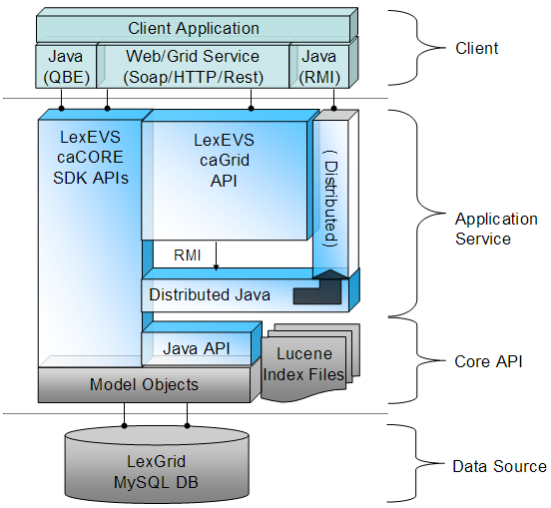
No new dependencies since LexEVS v5.0. See the Core Product Dependency Matrix.
No changes in the technology stack since LexEVS v5.0.
None.
Due to the additional content to load from RRF files in LexEVS v5.1, there is a risk of increased loading times and increased storage requirements. However, the new loader framework should mitigate the increased loading times: it provides a faster load while increasing the capacity for content to be loaded.
This section describes architectural detail for services provided by the LexBIG system. These services are geared toward the administration, management, and serving of vocabularies defined to the LexGrid/LexBIG information model. A system overview is provided, followed by a description of key subsystems and components. Each subsystem is described in terms of its overall structure, formal model, and specification of key public interfaces.
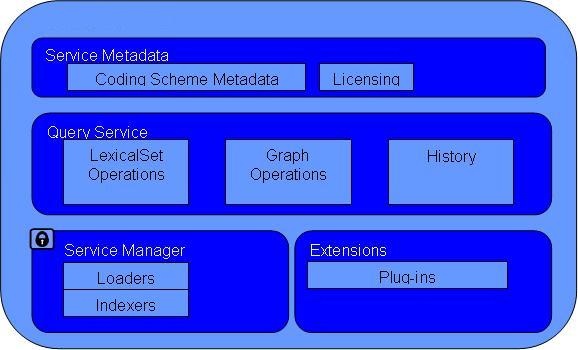
The LexBIG Service is designed to run standalone or as part of a larger network of services. It is comprised of four primary subsystems: Service Management, Service Metadata, Query Operations, and Extensions. The Service Manager provides administration control for loading a vocabulary and activating a service. The Service Metadata provides external clients with information about the vocabulary content (e.g. NCI Thesaurus) and appropriate licensing information. The Query Operations provide numerous functions for querying and traversing vocabulary content. Finally, the Extensions component provides a mechanism to extend the specific service functions, such as Loaders, or re-wrap specific query operations into convenience methods. Primary points of interaction for programming include the following classes:
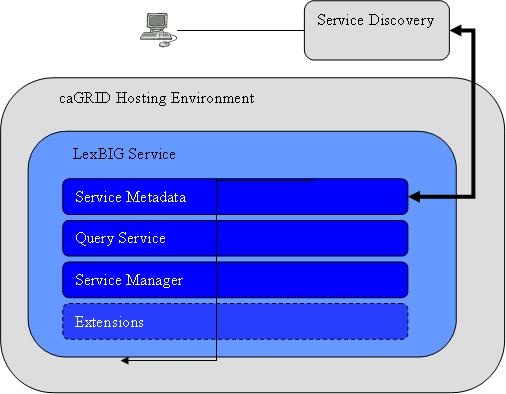
The LexBIG architecture provides the underpinnings LexBIG services to be made accessible through the caGRID environment in the future, where LexBIG services might optionally be deployed in a caGRID Globus container. caGrid provides a Globus service for service registration and discovery. LexBIG services deployed to the grid would be registered in the NCICB registry and be searchable through the NCICB index service.
Specification
Additional specifications related to the registration and discovery of LexBIG services in the caGRID environment will be included later phases of work in concordance with caGRID 1.0. This is will be coordinated with caBIG Architecture workspace designees.
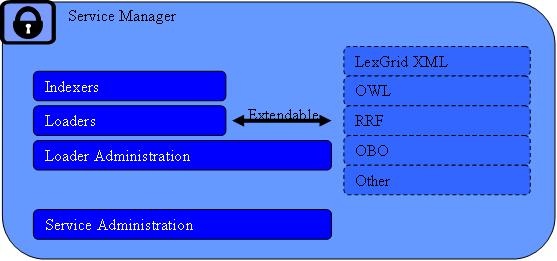
This subsystem provides administrative access to functions related to management and publication of LexBIG vocabularies. These functions are generally considered to be reserved for LexBIG administrators, with detailed instructions on how to secure and carry out related tasks described by the LexBIG Administrator's Guide.
This subsystem is further broken down into the following components:
Index creation is typically bundled into the load process. Architecturally speaking, however, this capability is decoupled and extensible.
As with indexers, the load mechanism is designed to be extensible from an architectural standpoint. Additional loaders can be supported by the introduction of pluggable modules. Each module is implemented in the Java programming language according to a LexBIG-provided interface, and registered to the loader runtime environment.
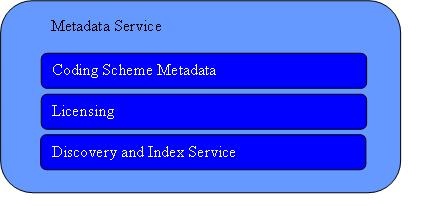
This subsystem provides information about accessible vocabularies, related licensing/copyright information, and registration/discovery of LexBIG services.
The ability to locate and resolve vocabulary metadata is fulfilled through the LexBIGService class. Metadata defined by the LexGrid information model is resolved with each CodingScheme instance. Available metadata on each resolved scheme includes, but is not necessarily limited to, the following:
In addition, each LexBIGService provides a centralized metadata index that allows registration and query of code system metadata without requiring resolution of individual CodingSchemes. This metadata index is optionally populated, typically during the vocabulary load process. The metadata index allows for the metadata of multiple code systems to be cross-indexed and searched as part of the query subsystem.
Finally, the LexBIG architecture provides the underpinnings for LexBIG services to be made accessible through the caGRID environment in the future, where vocabulary services might be deployed and discovered within a caGRID Globus container. However, this portion of the API is preliminary and awaits coordination with caBIG Architecture WS designees to determine exact recommendations and nature of LexBIG services on the grid.
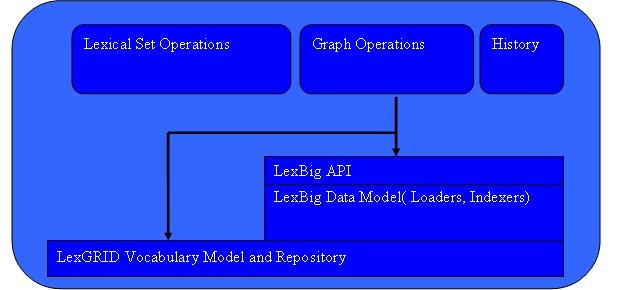
This subsystem provides the functionality required to fulfill caCORE/EVS and other vocabulary requests. The Query Service is comprised of Lexical Operations, Graph Operations, Metadata, and History Operations.
See LexEVS 4.2 Grid Service Design and Implementation.